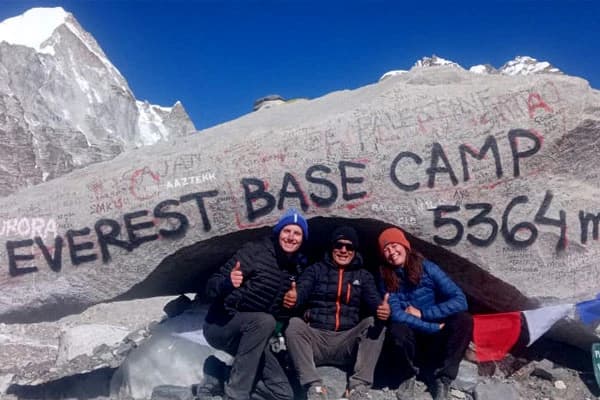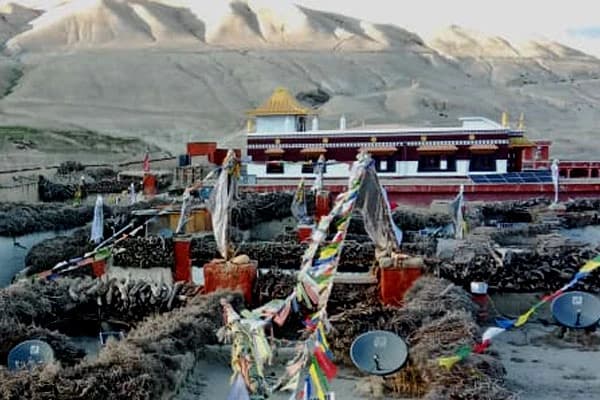Why is it necessary to be prepared for the trek to Annapurna Base Camp?
Is the ABC trek easy like Poon Hill Trek? No. Is it challenging like the Annapurna Circuit Trek? The answer is still no. However, it requires the right preparations to become a success story because there are still some challenges you need to tackle. The trek runs at high mountain altitudes with less breathable air, so it becomes more difficult to catch your breath.
The weather in this area shifts rapidly because sunny conditions can transform into rain or snowfall within minutes. Many hours of daily walking will occur, so your physical strength must be sufficient. When you fail to prepare adequately, you risk illness or injury during the trek.

Proper preparations combined with appropriate equipment ensure security while creating comfortable conditions, as it ensures you will have better enjoyment while viewing amazing landscapes rather than battling illness or tiredness.
How do you prepare for the Annapurna Base Camp Trek?
Visa And Entry Process
A visa is required for all travelers visiting Nepal, so without one, you cannot enter the country. Nepalese visas can be obtained either in person at the airport or through online services before your ABC trip. All children below 10 years of age obtain visas for free. Remember, you must carry a passport valid for at least six months to enter Nepal. At the arrival airport, you need to complete documentation and a USD 30 payment for the 15-day visa whereas the 30-day visa requires a USD 50 payment or USD 125 for 90 days. The visa application requires two passport photos and officials at the airport need you to provide your hotel booking, trekking itinerary and return flight ticket thus keep this verification ready. You must first obtain your visa before immigration officials at the border will stamp your passport. You can schedule visa extension procedures at the Kathmandu or Pokhara offices to stay for an extended period.
Permits: Get the Right Papers
Permits are the way to protect and promote the Annapurna Conservation Area while ensuring our safety. So here are the two important permits for the Annapurna Base Camp (ABC) trek that you must obtain from the authorized local trekking agency. Don't worry! We initiate permit applications immediately after your booking confirmation with our company.
- Annapurna Conservation Area Permit (ACAP): NPR 3,000 (approximately $27) for foreigners. NPR 1000 (approximately $9) for SAARC countries.
- Trekkers’ Information Management System (TIMS) Card: NPR 2,000 (approximately $18) for foreigners. For SAARC nationals, NPR 300
Physical Fitness: Training Tips For Beginners
Your body is your best friend during the trek to Annapurna Base Camp. why? Physical fitness allows you to fully appreciate the scenic vistas because it reduces exhaustion during the trek.
Here are some tips you can follow:
- Initiate your walking exercise 30 minutes before advancing to 4-5 hours sessions.
- Climb stairs in a building or traverse a steep slope as much as you can throughout the week. The trail contains thousands of stone steps!
- Wear your hiking boots throughout training walks to build boot comfort and prevent blister formation during the actual trek.
- Use your backpack with its full load during practice hiking sessions. Begin with small weights then gradually increase how much of weight you carry before handling complete gear loads.
- Perform squats and lunges and step-ups exercises for your legs two times each week. Your leg strength training enhances your performance when ascending steep slopes.
- Swimming, running and biking once per week helps you develop heart and lung strength.
Fuel Body: Nutrition And Hydration
.What better way to fuel your body than with nutritious food? You should consume nutritious food both before starting your trek and during your journey. The human body requires nutritious food to tackle high elevation and long hours of walking. Choose fruits, vegetables whole grains as your main diet and pack protein bars together with trail mix so you have nutritious snacks at hand. Select hearty food that contains carbohydrates together with protein and vitamins. The best option? Dal Bhat is served with rice, lentil soup, vegetable curry, and pickle.

Always carry a water bottle! Water intake must reach at least 3 to 4 liters each day during your trek through Annapurna Base Camp. Drinking soup and hot tea serves as a heat source to combat winter coldness. Drinking alcohol must be completely avoided because the symptoms of altitude sickness will become worse. Consuming nutritious meals and enough water will maintain your stamina across the entire trek.
Mental Consideration
The journey to Annapurna Base Camp in Nepal tests your body strength but also your mind through its demanding nature. The trail will offer many challenging days with steep slopes to climb and your body will become tired and your mind may think of giving up. Stay positive! Focus on the journey rather than the last destination and celebrate these small wins. Breathing deeply will help you when facing challenging moments. Above all, learn to stay positive along with being patient during times when your plans do not turn out as expected. Mentally prepare with a good attitude for the successful completion of Trekking to Annapurna Base Camp.
Hiring Guide And Porter
If you are a beginner and need a travel companion, hire a guide or porter who will be with you throughout the Annapurna Base Camp Trekking Route. A guide shows you the way through the trail path while sharing information about the local customs of the region. Their communication skills in English and Nepali enable smooth interaction in tea houses and lodges as well as help you in emergencies. A guide typically charges between USD 25 to 30 for daily service. By employing a porter service, your main pack can stay small because they will shoulder your big bag while you use a compact daypack. This makes walking much easier. Porters cost about USD 20-25 per day. Look for your guide and porter before the trek commences. Most trekking companies located in Kathmandu or Pokhara offer guide and porter hiring services. The majority of trekkers admit that a guide and porter service significantly enhanced their journey.
Travel Insurance
Your Annapurna Sanctuary Trek requires travel insurance to safeguard you from unexpected incidents which may arise during your adventure. Your insurance must include coverage for elevations above 4,000 meters and provides helicopter emergency services together with medical care in Nepal. Traveling without medical insurance results in heavy expenses during the process of being rescued from mountain areas to hospitals for healthcare. Your insurance covers you if your luggage becomes lost or you need to cancel your trip. Make sure adventure activities are present in your insurance benefits when selecting your policy for any trek to the Annapurna region.
Don't skip this step!
Choose the Right Season
During spring (March to May) and autumn (September to November), you can have a pleasant experience which provides perfect trekking conditions for reaching Annapurna Base Camp. You obtain clear views of mountains while the weather remains pleasant without being too hot or humid. Beautiful flowers create a charming display across the path during springtime and the weather remains the most steady in autumn.
 While the off-season trek is also possible, it can create some challenges that need extra preparation. The summer months from June until August should be avoided because this is when the region experiences heavy rainfall that turns the trails into dangerous conditions with mud and slippery terrain. The winter months from December to February bring extreme cold weather, most severely at elevated altitudes while the trail becomes covered in snow and ice. But, weather forecasts should be your first priority, regardless of when you plan to start your trek.
While the off-season trek is also possible, it can create some challenges that need extra preparation. The summer months from June until August should be avoided because this is when the region experiences heavy rainfall that turns the trails into dangerous conditions with mud and slippery terrain. The winter months from December to February bring extreme cold weather, most severely at elevated altitudes while the trail becomes covered in snow and ice. But, weather forecasts should be your first priority, regardless of when you plan to start your trek.
Transportation And Accommodation
The Annapurna Base Camp Trekking in Nepal begins with choosing between an expedient 25-minute flight from Kathmandu to Pokhara or an extended 7-8 hour bus trip. After arriving at Pokhara, you must board a jeep to Nayapul from where the trek begins.
Tip: Make sure the weather is clear so flights do not get cancelled.
The tea houses are the basic form of accommodation throughout the Annapurna Trail. Where rooms cost about $5-10 per night. The dining rooms of tea houses provide space for eating meals and supporting interaction with fellow trekkers. Plan to bring a sleeping bag because tea house blankets may not be enough to keep you warm. Here’s a pro tip: Book rooms in advance during busy seasons as they tend to be fully occupied.. The trail does not have any ATMs, so you should bring some cash along.
How to Avoid Altitude Sickness during the Annapurna Trek?
Altitude sickness, also known as Acute Mountain Sickness (AMS), is a common threat when you go over 3500 meters. When you ignore altitude sickness, you face the risk of having a bad trekking experience. Nobody wants that, right? Higher altitudes reduce oxygen levels which may cause sickness when your body fails to adapt. To stay safe during your base camp journey, you must learn how to avoid altitude-related issues.
- Don't rush up the trail. Your body needs to adjust slowly so increase your sleeping elevation in daily steps of 300-500 meters.
- You need to consume 3-4 liters of water each day, whether or not you feel thirsty. The dry mountain environment takes away moisture from your body at an increased rate. Stay hydrated!
- Schedule a day of rest every time you climb 1,000 meters higher in elevation. Use this day to let your body get used to high altitude but continue taking smaller trips to new heights.
- Carbohydrate-rich foods such as rice, pasta and potatoes deliver energy to your body, helping it adapt better to high elevations. Garlic or ginger soup can warm you up from the inside while giving you the needed energy.
- Your physical functions related to oxygen distribution in your body lose efficiency when you consume these items.
- Report any headache, dizziness or stomach sickness immediately because these are warning signs of altitude sickness. Inform your guide or companions immediately to assist you.
- Practice "climb high, sleep low". You should climb at higher altitudes during daylight hours while returning to lower sleeping areas.
- Stop at every location to monitor your oxygen level with an oximeter and notify your guide about discomfort and any oxygen readings below average.
- Descend if symptoms worsen. Moving to a lower altitude serves as the most effective treatment for altitude sickness. Stop your ascent if your physical condition worsens significantly.
- Talk to your doctor about taking Diamox as a prevention method before heading to high altitudes.
Packing List: What To Bring For the Annapurna Base Camp Trekking
- Layers of cold-weather clothing should include thermal underwear along with hiking pants and a fleece jacket but you will need a down jacket and outer waterproof layer too.
- Choose waterproof trekking boots that provide high ankle support for your trek. Start wearing your boots at home for two or three weeks in advance so they break in properly.
- You need a sleeping bag rated below -10°C (14°F) as the blankets in teahouses do not provide adequate protection from the cold in winter months.
- Carry 2-3 liter capacity drinking water bottle and keep water purification tablets or purchase a filter for your water before your journey..
- Higher elevation exposes you to extremely powerful sunlight. Wear protective sunglasses for UV rays and apply SPF 50+ sunscreen while carrying a sun hat with a wide brim.
- A headlamp, powerbank and spare batteries are necessary items when staying at teahouses because power supplies remain limited. Cold temperatures decrease battery life significantly which means you need several spare batteries.
- Using trekking poles acts as a support system that reduces knee strain while descending downhill.
- Heat escapes rapidly from your head together with your hands and neck, so wear gloves that are warm and waterproof together with a headwear that covers your ears and a neck buffer.
- Prepare a kit with essential medicine supplies along with toilet paper, wet wipes, hand sanitizer, a toothbrush and personal care essentials. You will not find toilet paper available in most teahouses.
Choose the Right Itinerary: Standard, Short, and Combo Treks
The key to a successful Annapurna region adventure depends on selecting an appropriate trekking itinerary. Pick your trek based on your fitness level, combined with budget considerations and time limitations. Different trek routes vary in length depending on their steepness levels, with more challenging trails being shorter than easier ones. Some companies offer combined trekking experiences that allow you to explore multiple locations within one excursion.
The following are some ABC trekking choices:
Standard Annapurna Base Camp Trek (11 Days): This established trail allows you to discover the scenery at a comfortable pace while taking you through the picturesque Gurung settlements before leading you into rhododendron forests and mountain panoramas. The 11-day trek includes scheduled rest days for altitude adjustment, which enhances safety and is suitable for people who have multiple days of available time and want to experience everything in the Annapurna Sanctuary or for the better insights you can even combine it with new emerging treks such as Khopra Ridge Trek and Mardi Trek.
Short Annapurna Base Camp Trek (5 Days): Short on time? Those who have good fitness along with limited time, should consider this short route. Your journey will become faster through skipped villages as you complete long-distance walking because it takes advantage of car transportation to access starting points at elevated elevations. You will still get to see the mountain views from the base camp, but in a short time.
Mardi Himal and Annapurna Base Camp Trek (12 days): Want to explore more of the Annapurna Region? The ABC trek gets enhanced by including the Mardi Himal Trek experience. Double the viewpoints! The Mardi route provides unique views of Annapurna while remaining relatively empty of other hikers. Adventure enthusiasts seeking diverse experiences can opt for this trek because it involves additional trekking days.
Annapurna Base Camp Trek via Poon Hill (14 days): Want to see 19 peaks shining in golden color? Along this extended trek, you can enjoy the famous Poon Hill viewpoint from which they can see stunning sunrise views across the Himalayas. This route exposes you to a wide array of landscapes that merge with traditional villages as the pace slows down. Traveling along this extended path provides the entire Annapurna experience since it allows you enough time to explore every segment of your journey.
(Destination Himalaya Treks has all these diverse options, just let us know what you prefer.)
Select a Local Agency
The trekking agency you choose can make or break your trekking journey. To have the best Annapurna Base Camp Trek experience, select a Nepal-based trekking agency that has operated as a business for at least five consecutive years. Research agencies that gained positive remarks from previous travelers on online platforms and consult with people who have already visited Nepal, and ask for their recommendations. Make sure the agency has obtained licenses that are valid according to the Nepal government regulations. You should send emails to multiple agencies to check their prices and examine their package contents. Remember that a trustworthy travel agency should never force you to make a booking. immediately.
Let's make it simple for you. You don't have to look further. Destination Himalaya Treks and Expedition will become your best partner for your journey, as we have been running our services for over 15 years with a 98 percent satisfaction rate. The numbers speak for themselves. Join us!
Ready to start your adventure? Book your Annapurna Base Camp Trek for 2025 and 2026
Preparation for the ABC Trek takes some time but it is totally worth it! The right gear, proper planning and good overall health will lead you to pleasurable Himalaya mountain adventures. Standing in Annapurna Base Camp generates a memory that you will treasure forever. The knowledge about the right preparation will help you organize your perfect trekking adventure in Nepal.
Do you think you are ready now? Book your epic trek through Destination Himalaya Treks and Expedition for a successful and smooth journey. We have got a diverse Annapurna Base Camp Trek Package that suits your every need. Contact us right now!




 While the off-season trek is also possible, it can create some challenges that need extra preparation. The summer months from June until August should be avoided because this is when the region experiences heavy rainfall that turns the trails into dangerous conditions with mud and slippery terrain. The winter months from December to February bring extreme cold weather, most severely at elevated altitudes while the trail becomes covered in snow and ice. But, weather forecasts should be your first priority, regardless of when you plan to start your trek.
While the off-season trek is also possible, it can create some challenges that need extra preparation. The summer months from June until August should be avoided because this is when the region experiences heavy rainfall that turns the trails into dangerous conditions with mud and slippery terrain. The winter months from December to February bring extreme cold weather, most severely at elevated altitudes while the trail becomes covered in snow and ice. But, weather forecasts should be your first priority, regardless of when you plan to start your trek.

